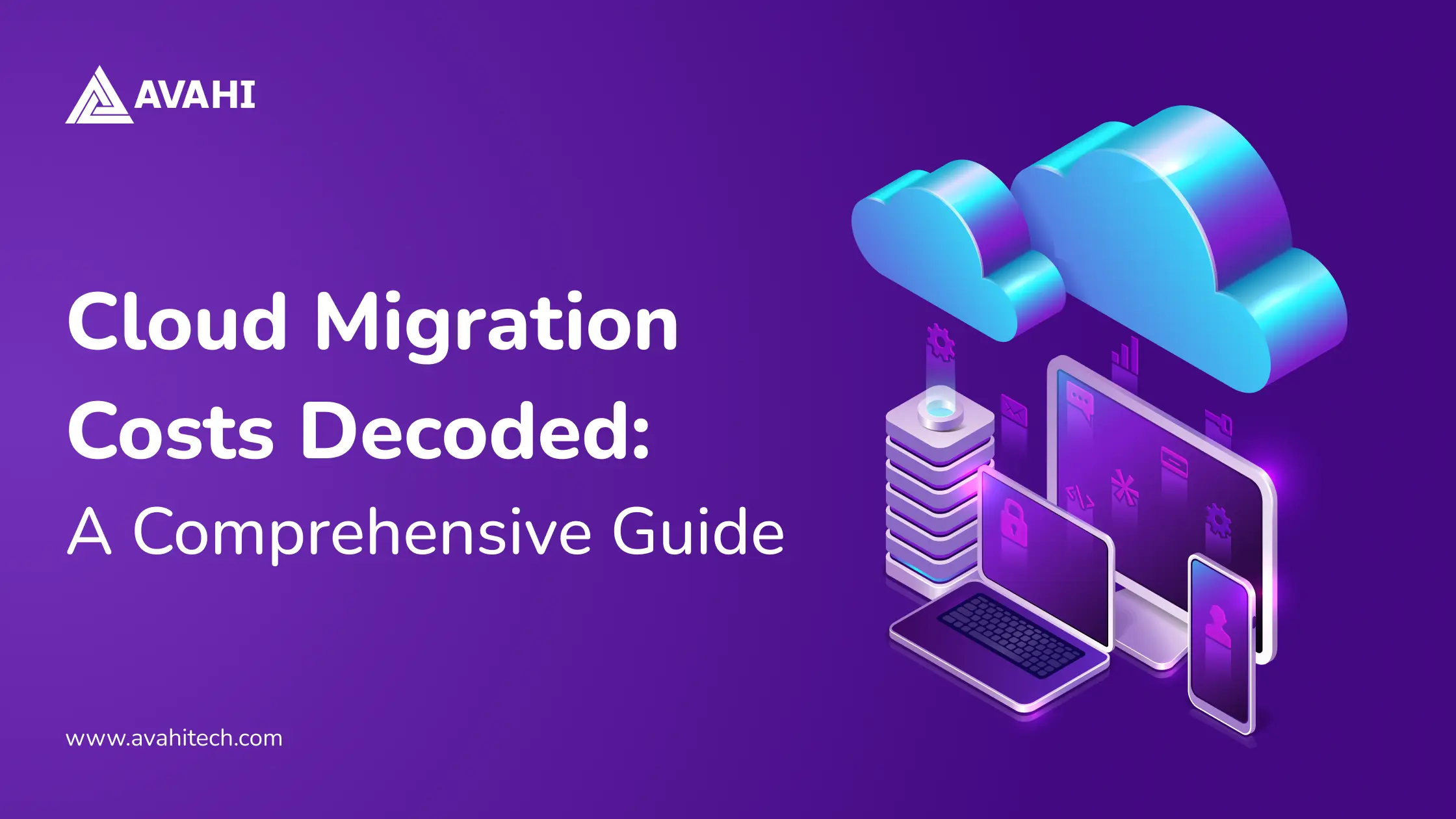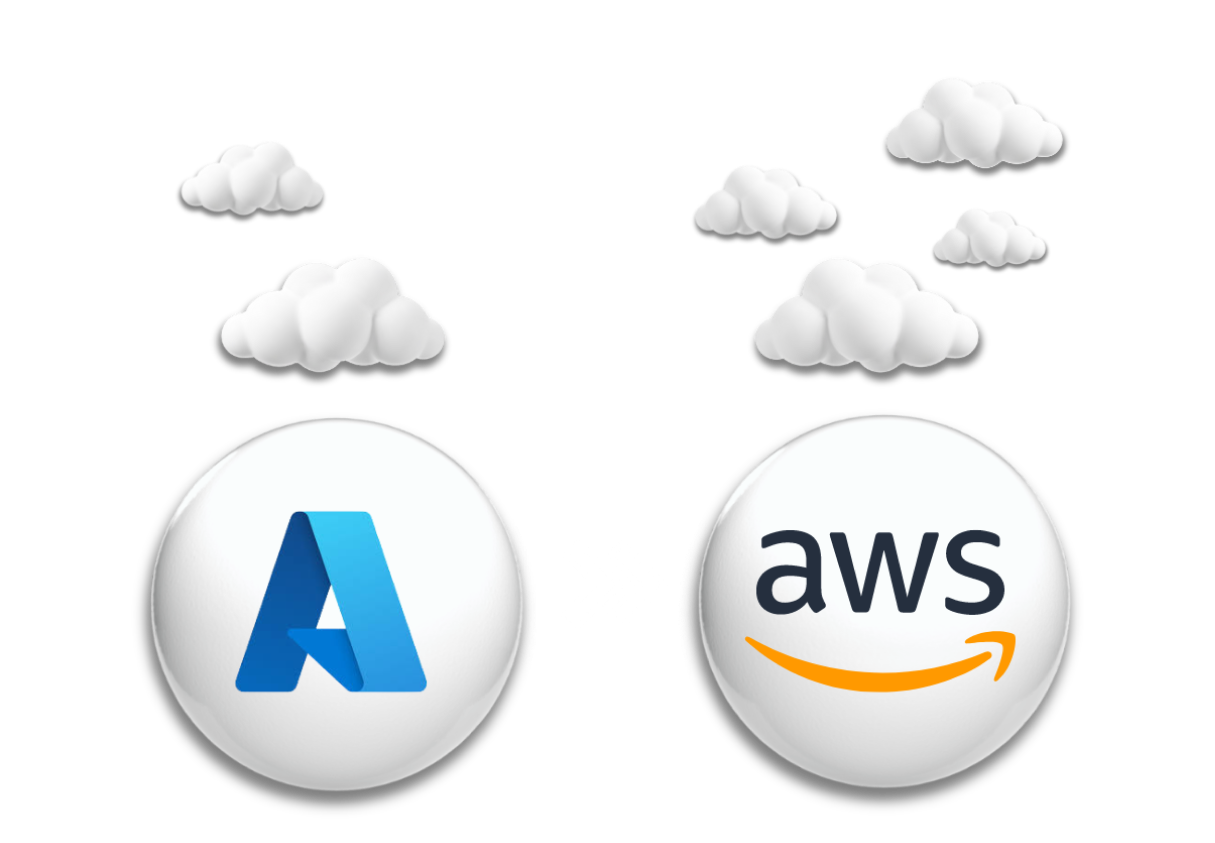As businesses increasingly adopt digital transformation, moving to cloud computing has become essential. However, migrating to the cloud can come with unexpected costs and complications that might disrupt even the most carefully planned projects.
Reports show that nearly 70% of companies struggle with cloud cost management, often exceeding their budget during migration. This makes it essential to understand all possible costs, from infrastructure and software licensing to data transfer and compliance costs.
Cloud migration costs can significantly vary depending on factors like the amount and type of data being moved, the size of your operations, the complexity of your current systems, and your choice of cloud service provider. Recognizing these factors early can help you plan a more accurate budget and ensure a cost-effective migration approach. This blog will help you understand and manage cloud migration costs, providing a smooth and cost-effective transition.
Understanding Cloud Migration Costs
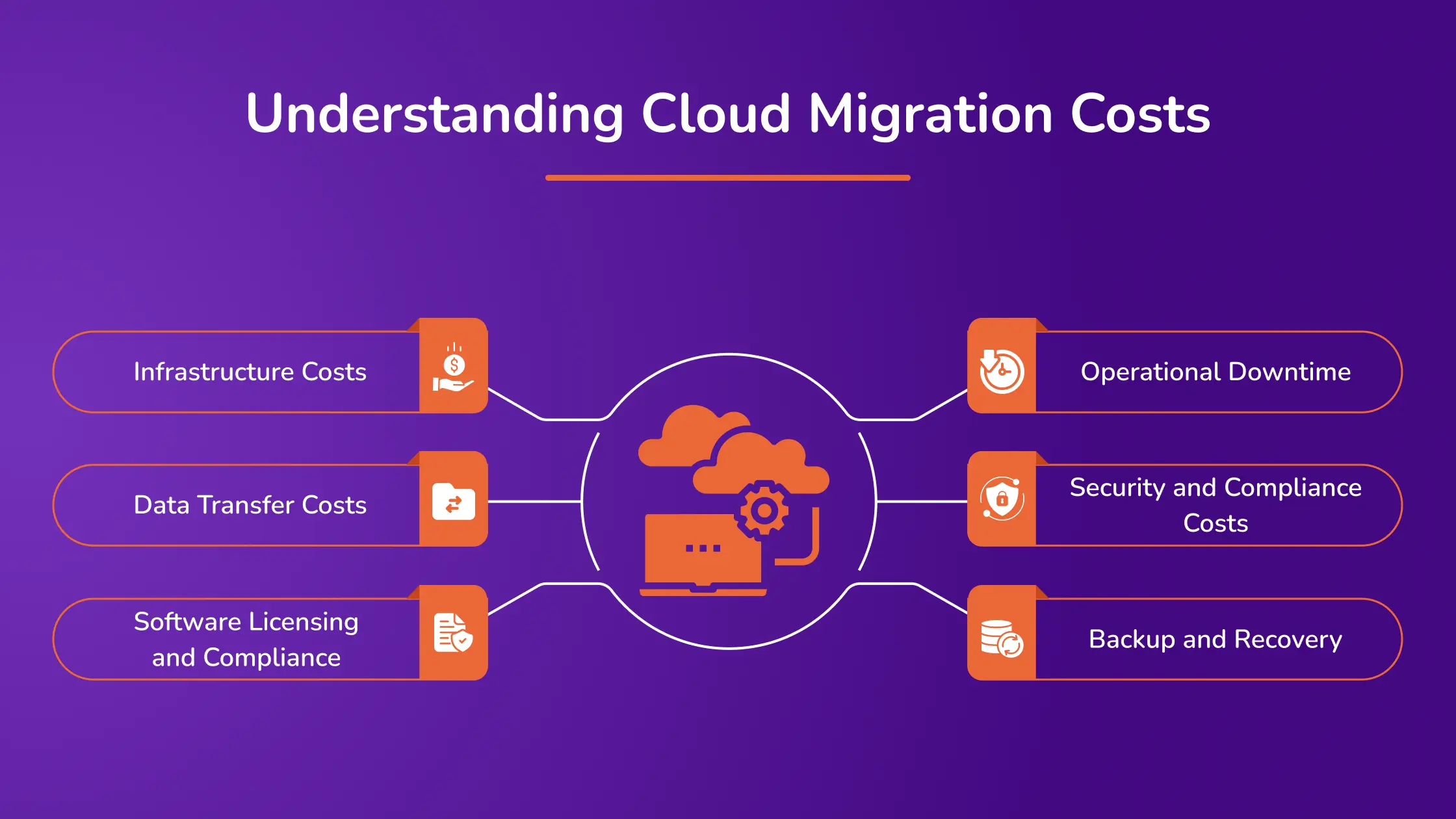
Knowing the costs involved is essential when planning a cloud migration to ensure a successful and budget-friendly transition. Let’s explore each of the costs involved in detail:
- Infrastructure Costs: The foundation of cloud migration expenses lies in setting up and maintaining the necessary infrastructure. This includes costs associated with servers, storage, and networking. Choosing the right pricing model, such as pay-as-you-go or reserved instances, can significantly influence these costs. Proper analysis of your needs helps select the most cost-efficient option, thus avoiding unnecessary expenses from over or under-utilizing resources.
- Data Transfer Costs: The fees for transferring data to the cloud can quickly accumulate, particularly for organizations with large data sets. Understanding the pricing details of inbound and outbound data transfers and employing strategies like data compression can help reduce these costs.
- Software Licensing and Compliance: Migrating to the cloud might require new software licenses or modifications to existing ones. To avoid legal issues, including these costs in your budget and ensuring that all software use complies with licensing agreements is crucial.
- Operational Downtime: Migration can disrupt normal business operations, potentially leading to revenue loss. Minimizing downtime with strategic planning is key to reducing these indirect costs.
- Security and Compliance Costs: Protecting your data in the cloud requires investments in security measures and compliance with industry regulations, which can vary significantly by sector. These costs are critical for avoiding data breaches and regulatory penalties.
- Backup and Recovery: While cloud providers offer these services, they come at a cost. It’s important to evaluate your data backup and recovery needs and incorporate them into your budget.
Additional Considerations for Cloud Migration Budgeting
- Setup and Configuration Costs: Setting up your cloud environment can vary in complexity and cost. Involving a skilled DevOps team early in the process can help estimate these costs accurately and ensure an efficient setup.
- Choice of Cloud Provider: The cost implications of choosing a cloud provider are significant. Considering factors like service options, compliance, and technology preferences is vital. This decision impacts both initial and ongoing expenses.
- Ongoing Operational Costs: You will incur ongoing costs for cloud services after migration. Budgeting for continuous monitoring, maintenance, and management of your cloud environment is crucial for long-term success.
Hidden Costs in Cloud Migration
While the apparent cloud migration costs are often well-planned, several hidden expenses can impact the long-term budget.
- Post-Migration Management Costs: Ongoing costs include provider fees for cloud services and the expenses related to maintaining and optimizing the cloud environment. Consider whether your current IT team can manage these tasks or if outsourcing is necessary. Additionally, employee training on new systems may incur further costs.
- Application Modernization Expenses: Applications might need modifications to function optimally in a cloud-native environment, potentially requiring extensive rewriting. Estimating the time and cost for these modifications can be challenging and varies widely, affecting the overall migration budget.
- Scaling Costs: Initial cloud infrastructure involves precise configuration to avoid overprovisioning. Pay attention to auto-scaling settings to prevent unnecessary cost fluctuations. Resources that scale down still incur costs during their cool-down period, which can unexpectedly increase expenses.
Factors Affecting Cloud Migration Costs
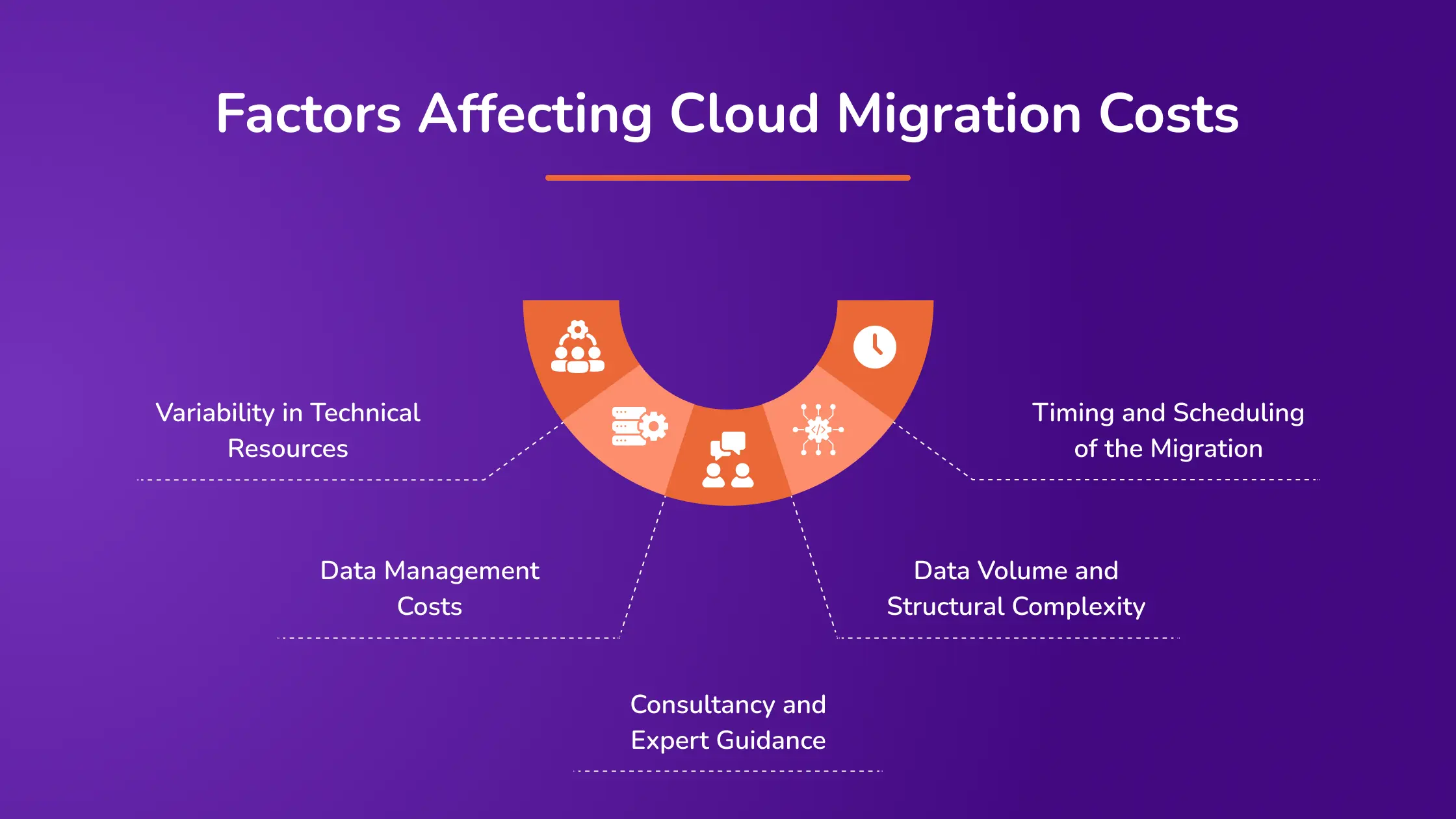
Cloud migration is critical for businesses transitioning to more digital infrastructure, but various factors can significantly influence the overall costs.
- Variability in Technical Resources
The availability of skilled technical staff can significantly affect cloud migration costs. Companies may choose to train internal teams or hire external consultants. While developing in-house expertise might involve upfront training costs, it could be more cost-effective in the long term. Conversely, external consultants can expedite the migration but may increase initial costs.
- Data Management Costs
Proper data backup and recovery strategies are vital to prevent data loss during the migration. While necessary, these strategies incur costs that must be factored into the overall budget.
- Consultancy and Expert Guidance
Employing cloud consultants can provide valuable insights and facilitate a more efficient migration process. Although this can be an added expense, the expertise offered can prevent costly mistakes and streamline the migration.
- Data Volume and Structural Complexity
The amount and complexity of the migrated data play a critical role in determining the migration costs. Larger volumes and more complex data structures require more resources, increasing overall expenses.
- Timing and Scheduling of the Migration
Rushing the process to meet tight deadlines may require additional resources, while scheduling the migration during less busy periods can help minimize business disruptions and associated revenue losses.
How to Calculate Cloud Migration Costs?
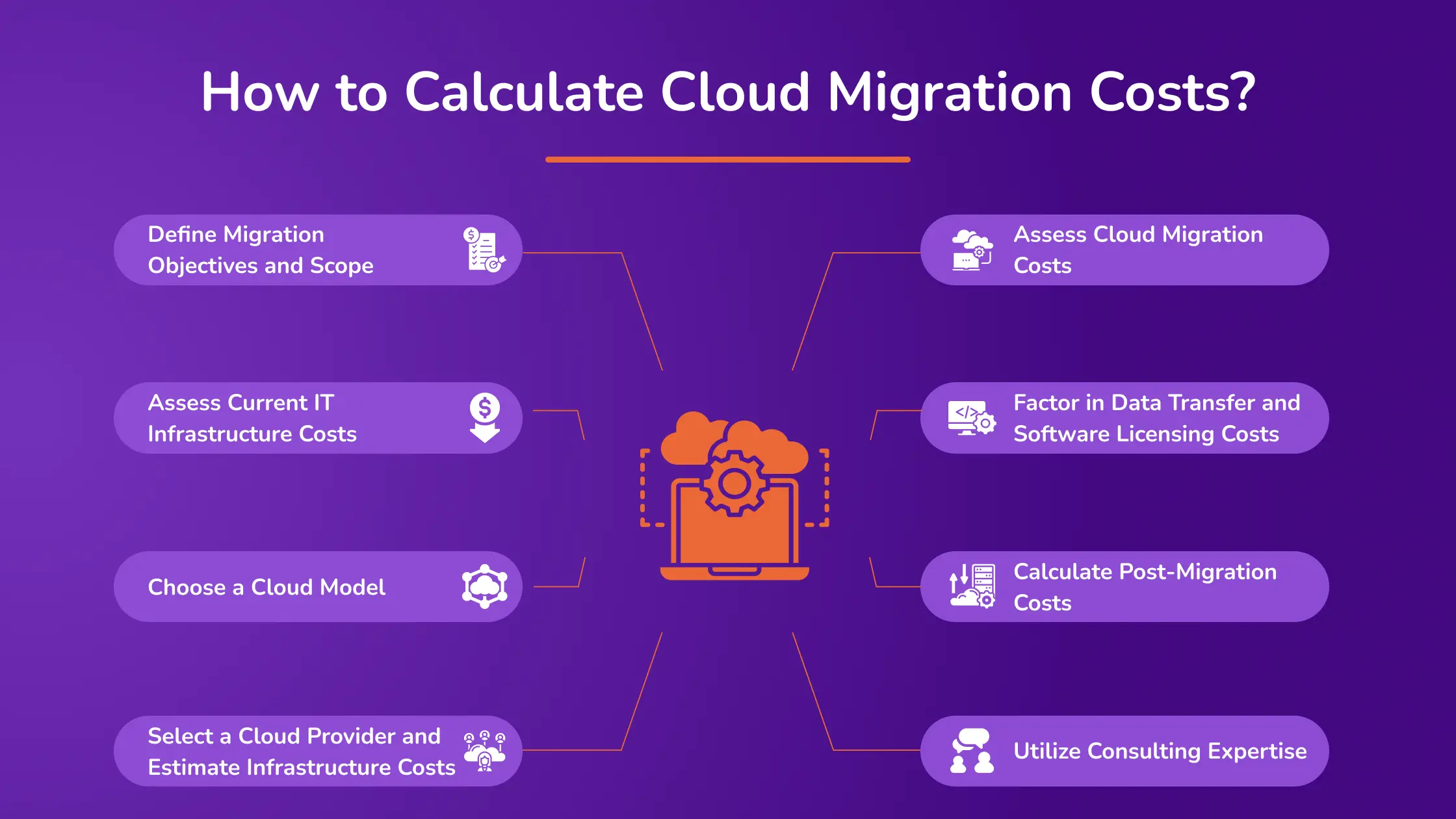
Creating a detailed budget for cloud migration is crucial for managing costs and ensuring a smooth transition. Here’s how to efficiently consider all potential expenses.
Step 1: Define Migration Objectives and Scope
Clarify your goals and the extent of the migration to align resources and budgets accurately.
Specify the business objectives behind migrating to the cloud. Determine which applications, data, and services will be moved and whether the migration will be complete or phased.
Step 2: Assess Current IT Infrastructure Costs
Begin by understanding your current IT spending to establish a baseline for potential cost savings through cloud migration.
- Document the costs associated with physical IT assets and their upkeep.
- Review existing software licenses and their associated costs to identify necessary adjustments for the cloud.
- Evaluate expenses related to IT personnel managing your current infrastructure.
Step 3: Choose a Cloud Model
Select the most appropriate cloud model based on your needs, balancing cost, control, and security.
- Public Cloud: Generally more cost-effective and scalable.
- Private Cloud: Offers greater control and enhanced security at a higher cost.
- Hybrid Cloud: Combines elements of both public and private clouds, offering flexibility.
Step 4: Select a Cloud Provider and Estimate Infrastructure Costs
Choose a provider that fits your technical and budgetary requirements, and use their tools to estimate infrastructure costs.
- Research and choose a provider like AWS, considering their service offerings and pricing models.
- Use tools such as the AWS Pricing Calculator to estimate server, storage, and networking costs.
Step 5: Assess Cloud Migration Costs
Identify the specific costs associated with transferring your IT environment to the cloud.
- Consider engaging with cloud service firms for specialized tasks such as application modernization.
- Decide between online transfers or physical migration tools and plan for potential contingencies.
- Budget for comprehensive testing and securing your data during the migration.
- Include the costs of maintaining operational continuity during the transition.
Step 6: Factor in Data Transfer and Software Licensing Costs
Anticipate the expenses related to moving data and updating software licenses.
- Data Transfer Costs: Estimate the charges for moving large volumes of data, applying data optimization strategies to reduce costs.
- Software Licensing: Plan for new cloud-compatible software licenses and adjustments to existing licenses.
Step 7: Calculate Post-Migration Costs
Prepare for the ongoing expenses associated with your new cloud environment.
- Allocate funds for integrating and testing cloud applications.
- Budget for training your team and any additional staffing needs.
- Continue investments in security measures and compliance audits.
- Utilize features like AWS load-based auto scaling to optimize resource usage and costs.
Step 8: Utilize Consulting Expertise
Engage with a consulting partner like Avahi to streamline the migration process and address complex challenges. Leverage Avahi’s expert cloud migration consulting services to reduce migration time and enhance efficiency.
This strategic approach helps make informed decisions, optimize resource allocation, and successfully transition to the cloud.
Effective Strategies for Estimating Cloud Migration Costs
Accurate cost estimation is crucial to ensure efficient budget management and resource allocation when planning for cloud migration. Here, we explore how using cost calculators provided by major cloud service providers and implementing FinOps strategies can help precisely forecast and optimize expenses associated with cloud migration.
I. Utilizing Cost Calculators from Major Cloud Providers
- AWS Pricing Calculator: This tool is designed to help new and existing AWS customers understand potential costs when adjusting or adding services. It allows users to customize options to fit their needs and compare prices across different regions, helping identify the most cost-effective solutions.
- Microsoft Azure Pricing Calculator: Azure’s calculator simplifies the selection process by categorizing services and providing predefined scenarios. These scenarios can be tailored better to fit the specific requirements of your migration project, making initial cost estimation more straightforward.
- Google Cloud Pricing Calculator: This calculator, known for its detailed approach, is helpful for those who have a solid understanding of their infrastructure needs. It offers a powerful search function and real-time estimates that adjust as you refine your service requirements.
II. FinOps Cost Optimization Techniques
FinOps is pivotal in the migration phase and ongoing cloud management by helping businesses optimize their cloud spend. This approach focuses on:
- Identifying the most efficient cloud services and scaling options helps avoid unnecessary expenditures.
- Post-migration, FinOps helps in continuous cost analysis and the use of reserved instances, ensuring that your cloud spending aligns with business objectives and maximizes ROI.
Integrating these cost estimation tools and FinOps strategies helps manage costs effectively and also supports long-term scalability and operational efficiency.
Common Mistakes to Avoid in Cloud Migration Cost Management
Cloud migrations often exceed budgets due to several typical errors. Here’s a concise overview of these issues and how to mitigate them:
- Poor Cost Estimation and Planning: Many organizations underestimate the financial demands of cloud migration by not thoroughly assessing existing and future costs. Prevent this using detailed budgets and cloud cost calculators to evaluate all expenses accurately.
- Neglecting Cost Optimization: Continuous cost management is crucial to prevent budget overruns. Implement strategies like powering down non-essential resources during downtime, purchasing reserved instances, and using serverless options to optimize spending.
- Resource Overprovisioning: Allocating more cloud resources than necessary can lead to significant waste. To avoid this, rightsize your cloud resources according to actual needs and implement auto-scaling to adjust resources dynamically.
- Overlooking Data Transfer Costs: Data transfer expenses can escalate quickly, especially with large data volumes. Mitigate this risk by carefully planning your data transfer strategy, employing data compression, and selecting cost-effective cloud services.
By recognizing these common pitfalls and adopting appropriate strategies, organizations can better control their cloud migration budgets and avoid costly missteps.
Accelerate Your Cloud Migration with Avahi’s Expert Services
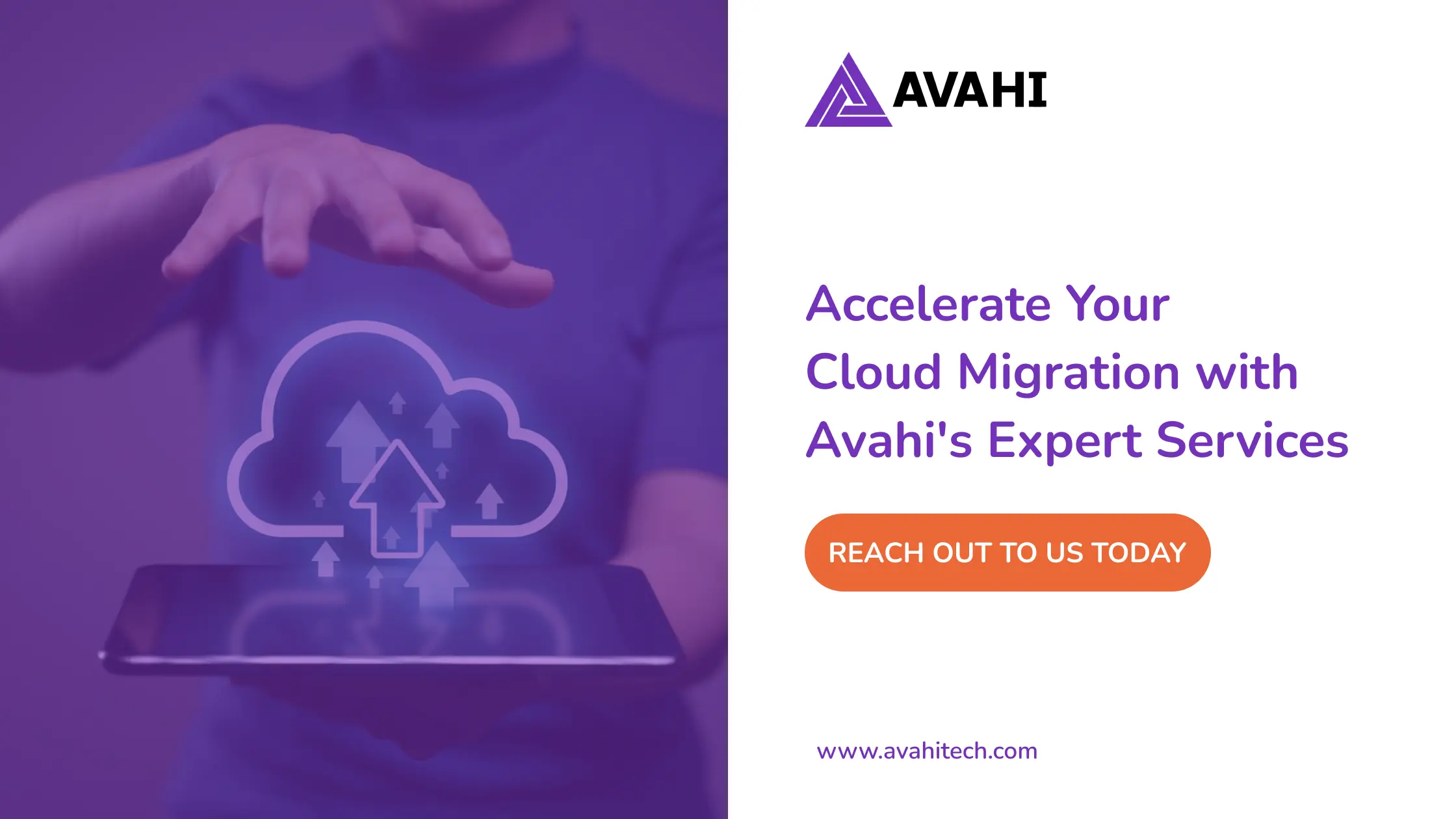
Transition to the cloud with confidence through Avahi’s specialized AWS Cloud Migration Consulting. Our expert team is equipped to handle the complexities of migrating applications and data from on-premise data centers to the cloud. Our services include:
Developed from years of experience with enterprise customer migrations, our plans are tailored to meet your specific needs. Ready to transform your cloud strategy? Contact Avahi today and embark on a successful cloud migration journey that sets your business up for long-term success.
Schedule a Free Cloud Adoption Readiness Assessment.

